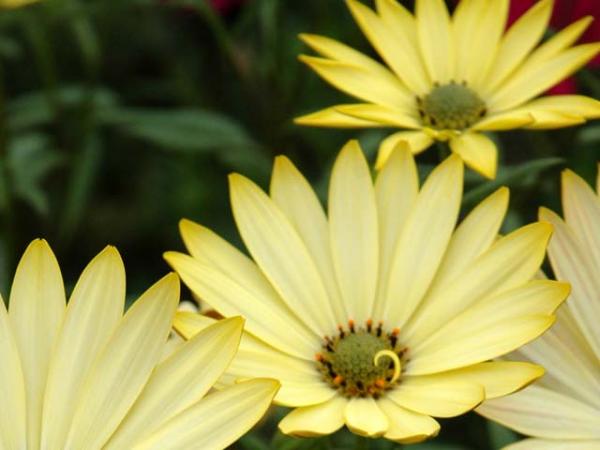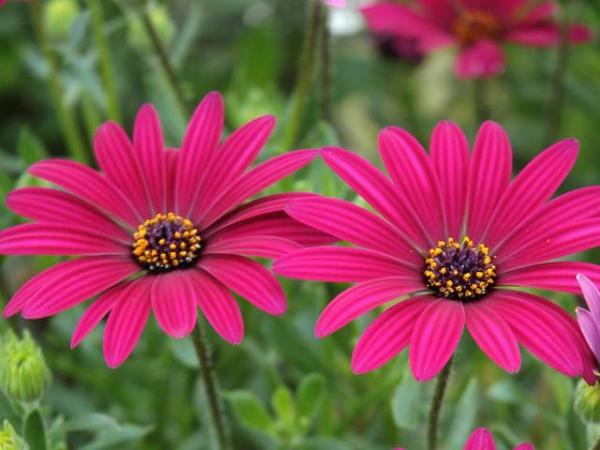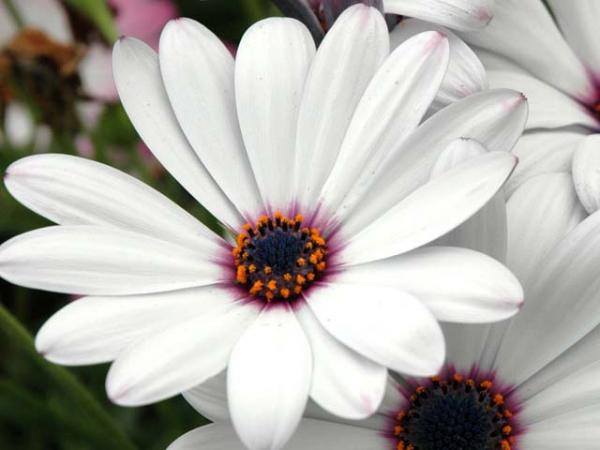Array
(
[0] => Array
(
[id] => 191
[is_published] => 1
[websiteID] => 5
[url] => /gardening/best-natives-for-pots-and-small-gardens.php
[page_status] => Published
[number_of_ads] => 5
[can_use_editor] => 1
[last_modified_date] => 2013-09-16 00:00:00
[last_modified_by] => Alan
[checked_for_duplicate_content] =>
[title] => Best Australian natives for pots & small gardens
[heading] => Best Australian natives for pots & small gardens
[meta_description] => The trend towards smaller gardens has inspired the plant lovers in the nursery industry to respond with an ever-increasing range of Australian plants that will delight those who want to attract birds and butterflies and bring a little bit of the bush onto their balconies. From banksias to bottlebrush there are plants that will add colour and texture to provide year round interest.
[article_category_1] => Gardening
[article_category_2] =>
[article_category_3] =>
[article_category_4] =>
[article_category_5] =>
[business_category_1] => Landscaper
[business_category_2] => Nursery
[business_category_3] => Garden Designer
[business_category_4] => Landscape Architect
[business_category_5] =>
[number_of_google_mrecs] =>
[show_google_ad_bottom_of_page] =>
[show_get_quotes_top_of_page] =>
[show_get_quotes_rhs_of_page] =>
[show_directory_search_widget] =>
[show_trending_content_widget] =>
[show_facebook_widget] =>
[show_further_reading_section] => 1
[show_sponsors_section] => 0
[show_top_article_ad] => 1
)
[1] => Array
(
[id] => 432
[is_published] => 1
[websiteID] => 5
[url] => /gardening/plant-finder/plant-index.php
[page_status] => Published
[number_of_ads] => 4
[can_use_editor] => 0
[last_modified_date] => 2013-10-13 00:00:00
[last_modified_by] => Alan
[checked_for_duplicate_content] =>
[title] => Plant index (not used)
[heading] => Plant index (not used)
[meta_description] => (not used)
[article_category_1] => Gardening
[article_category_2] => Landscaping
[article_category_3] =>
[article_category_4] =>
[article_category_5] =>
[business_category_1] => Landscaper
[business_category_2] => Garden Maintenance
[business_category_3] => Garden Supplies
[business_category_4] =>
[business_category_5] =>
[number_of_google_mrecs] => 0
[show_google_ad_bottom_of_page] => 1
[show_get_quotes_top_of_page] => 1
[show_get_quotes_rhs_of_page] => 0
[show_directory_search_widget] => 0
[show_trending_content_widget] => 0
[show_facebook_widget] => 1
[show_further_reading_section] => 0
[show_sponsors_section] => 0
[show_top_article_ad] => 1
)
[2] => Array
(
[id] => 202
[is_published] => 1
[websiteID] => 5
[url] => /gardening/native-grasses-dianellas-and-lomandras.php
[page_status] => Published
[number_of_ads] => 5
[can_use_editor] => 1
[last_modified_date] => 2013-09-16 00:00:00
[last_modified_by] => Alan
[checked_for_duplicate_content] =>
[title] => Native grasses and friends
[heading] => Native grasses and friends
[meta_description] => An exciting thing is happening in the world of Australian plants. Wild species that have tantalised gardeners in the past are now being improved to create a diverse palette of new varieties that offer all kinds of advantages. In particular, the necessity for water-wise, low maintenance gardens has inspired interest in plants that can be used as ground covers that will not only suppress weeds and erosion but also look fantastic.
[article_category_1] => Gardening
[article_category_2] =>
[article_category_3] =>
[article_category_4] =>
[article_category_5] =>
[business_category_1] => Landscaper
[business_category_2] => Nursery
[business_category_3] => Garden Designer
[business_category_4] => Landscape Architect
[business_category_5] =>
[number_of_google_mrecs] =>
[show_google_ad_bottom_of_page] =>
[show_get_quotes_top_of_page] =>
[show_get_quotes_rhs_of_page] =>
[show_directory_search_widget] =>
[show_trending_content_widget] =>
[show_facebook_widget] =>
[show_further_reading_section] => 1
[show_sponsors_section] => 0
[show_top_article_ad] => 1
)
[3] => Array
(
[id] => 455
[is_published] => 1
[websiteID] => 5
[url] => /gardening/lawn-to-envy-in-6-easy-steps.php
[page_status] => Published
[number_of_ads] => 1
[can_use_editor] => 1
[last_modified_date] => 2013-09-16 00:00:00
[last_modified_by] => Alan
[checked_for_duplicate_content] =>
[title] => A lawn to envy in 6 easy steps
[heading] => A lawn to envy in 6 easy steps
[meta_description] => Six step lawn maintenance guide.
[article_category_1] => Gardening
[article_category_2] =>
[article_category_3] =>
[article_category_4] =>
[article_category_5] =>
[business_category_1] => Landscaper
[business_category_2] => Nursery
[business_category_3] => Garden Designer
[business_category_4] => Landscape Architect
[business_category_5] =>
[number_of_google_mrecs] =>
[show_google_ad_bottom_of_page] =>
[show_get_quotes_top_of_page] =>
[show_get_quotes_rhs_of_page] =>
[show_directory_search_widget] =>
[show_trending_content_widget] =>
[show_facebook_widget] =>
[show_further_reading_section] => 1
[show_sponsors_section] => 0
[show_top_article_ad] => 1
)
)
Helpful articles
Best Australian natives for pots & small gardens. The trend towards smaller gardens has inspired the plant lovers in the nursery industry to respond with an ever-increasing range of Australian plants that will delight those who want to attract birds and butterflies and bring a little bit of the bush onto their balconies. From banksias to bottlebrush there are plants that will add colour and texture to provide year round interest.
Plant index (not used). (not used).
Native grasses and friends. An exciting thing is happening in the world of Australian plants. Wild species that have tantalised gardeners in the past are now being improved to create a diverse palette of new varieties that offer all kinds of advantages. In particular, the necessity for water-wise, low maintenance gardens has inspired interest in plants that can be used as ground covers that will not only suppress weeds and erosion but also look fantastic.
A lawn to envy in 6 easy steps. Six step lawn maintenance guide.
Plant description
Osteospermum, or African daisy, is a tough, hardy clump forming perennial plant for warmer areas. In cooler areas it performs as an annual. It bears daisy flowers in a good range of colours from white, yellows, purple, pinks and blue, with attractive, contrasting dark centres. It flowers for a long time through the warmer months of the year, and makes a good grouncover for sunny areas and also grows well in containers. Drought resistant once established, and with few pests and diseases, osteospermum is an easy care plant that can withstand adverse conditions, and a rewarding plant with some extra care.
Osteospermum does best in well drained soils. Regular watering and occassional fertilising will encourage flowering. Once the flowers are finished, it is advisable to dead head them, as well as giving the plant a light tip pruning, as this will encourage new growth.
Propagation is from seed or from tip cuttings.
Additional plant information
Flowers
Flower colour: not specified
Flowering season: spring summer winter
Plant size
Maximum height: 1.5 metres
Minimum height: 0.3 metres
Maximum width: 1 metres
Minimum width: not specified
Sunlight, frost & salt tolerance
This plant will tolerate full sunlight.
Light frost tolerance.
Plant is not salt tolerant.
Fauna attracting?
Not specified.
Climate
This plant species will grow in the following climates: temperate, subtropical.
Soil types & conditions
Loam: moist, well-drained.
Clay: not specified.
Sand: moist.
Soil pH: 5.5-6.5
Diseases
Fungal rots in over wet conditions
Pests
White fly, aphids
Miscellaneous information
Planting season: Any.
Types of fertiliser: not specified.
Find a nursery
Search for another plant



